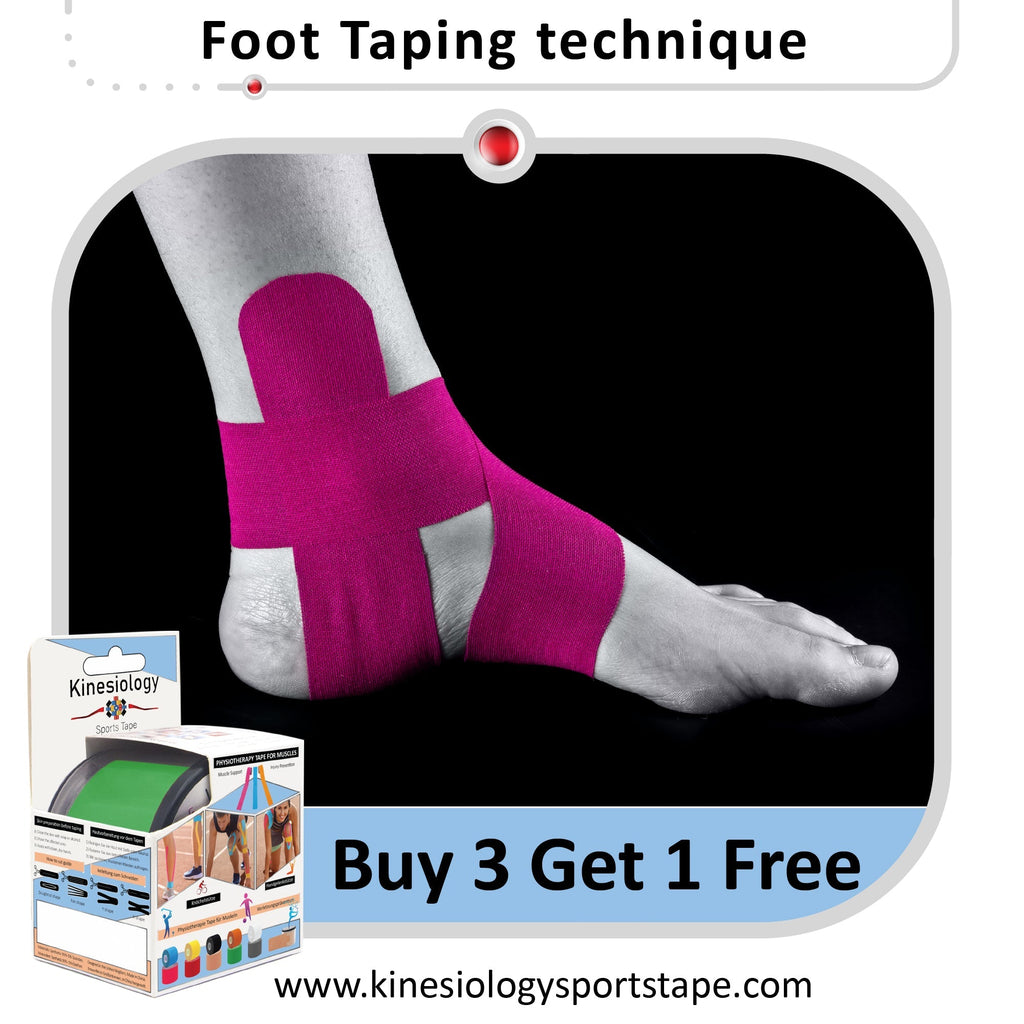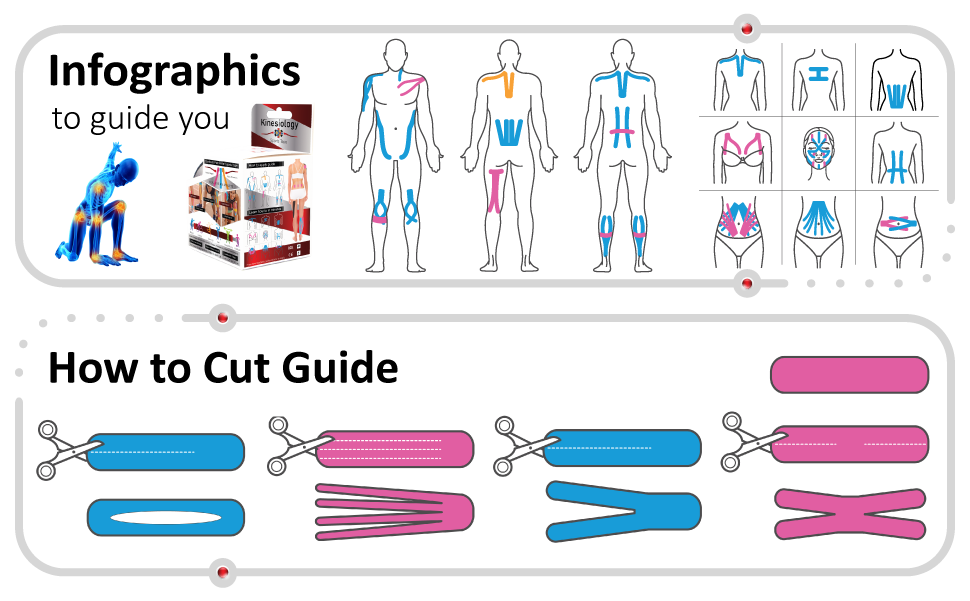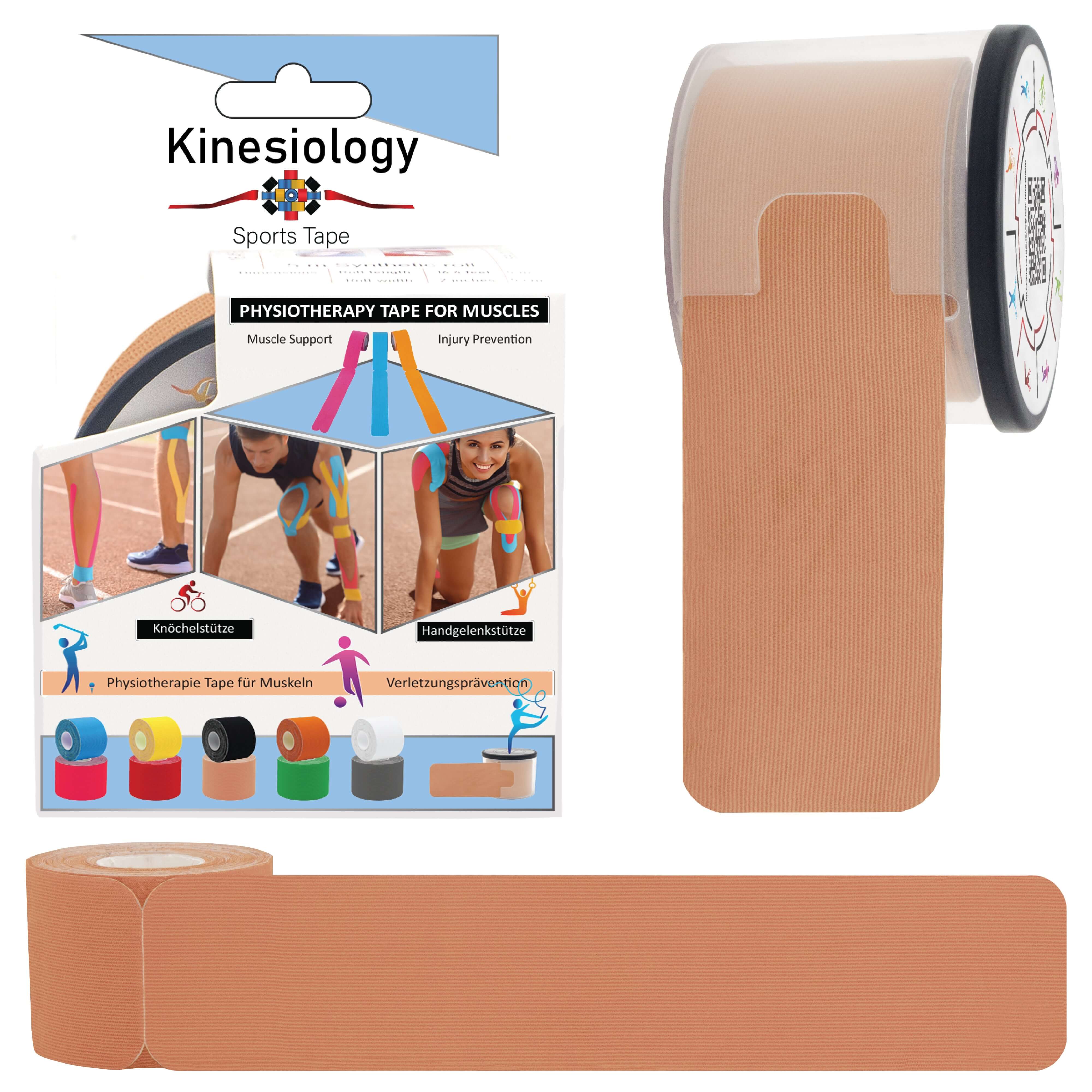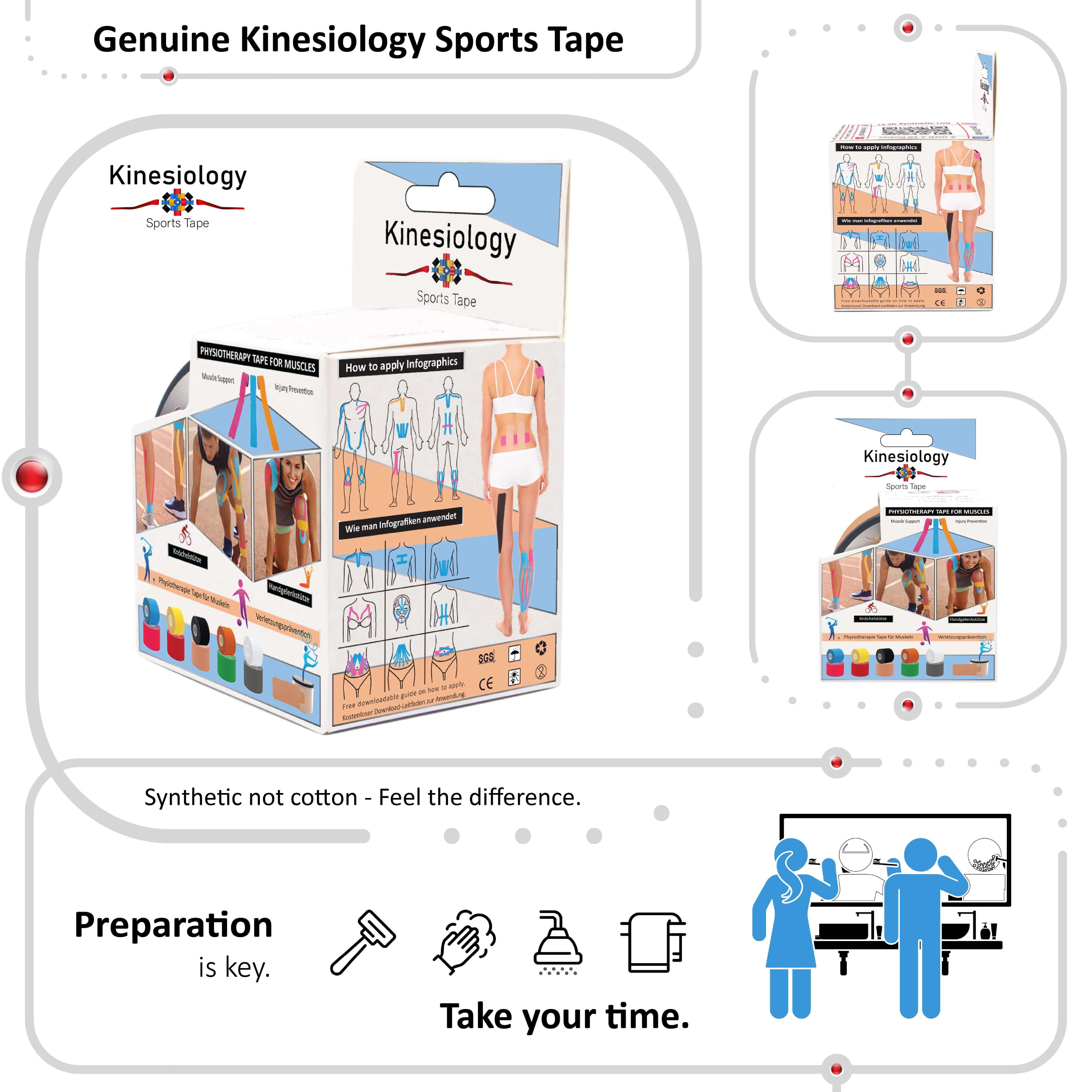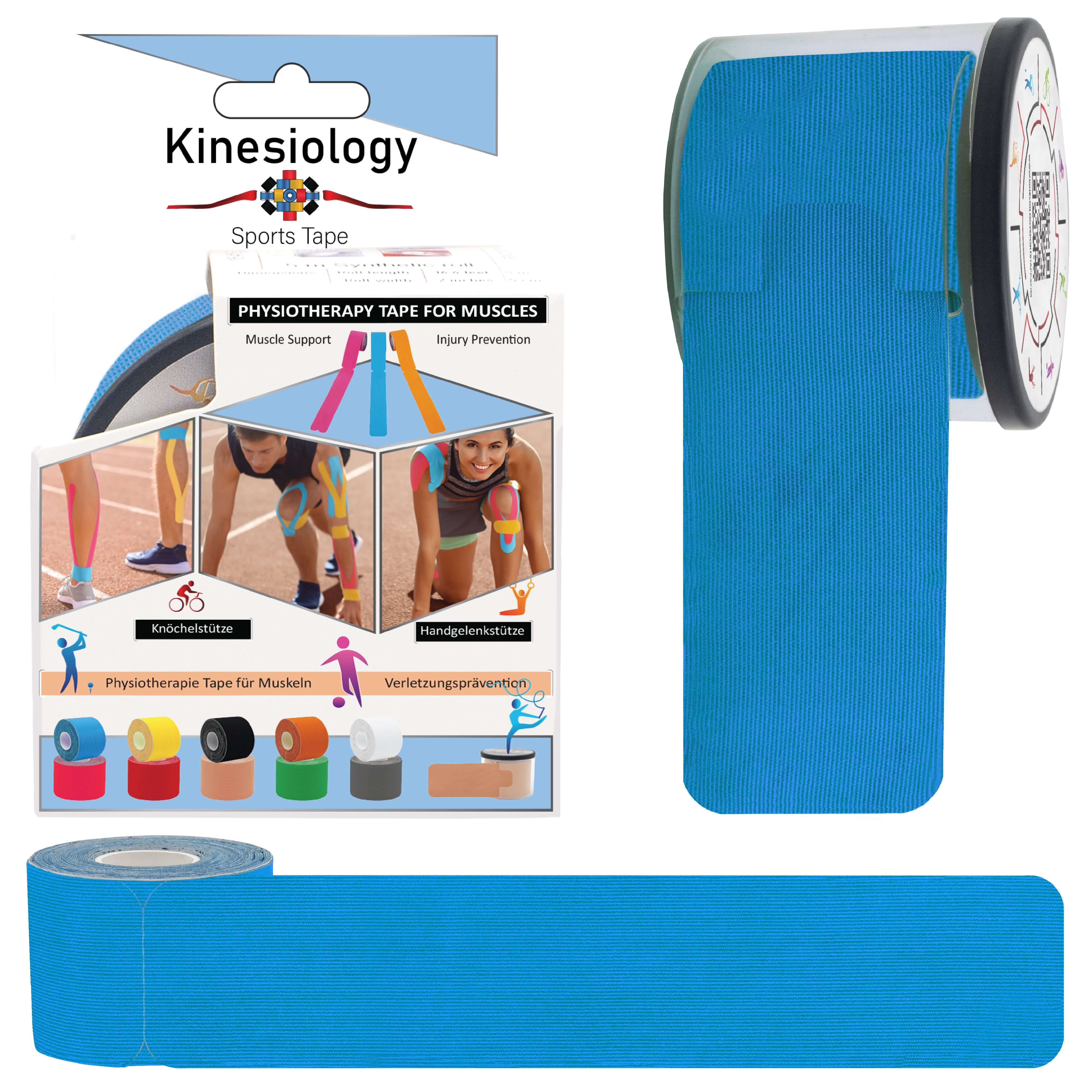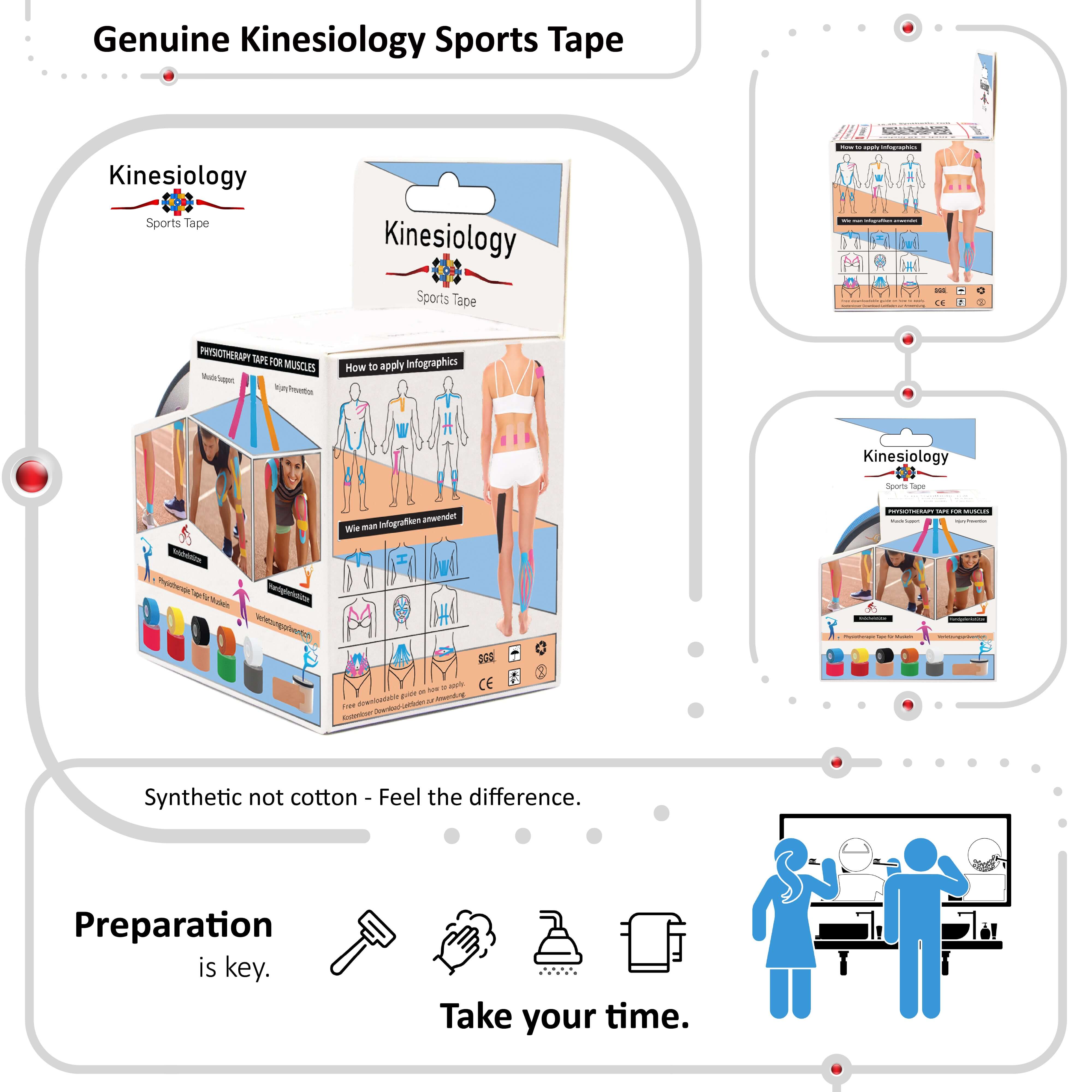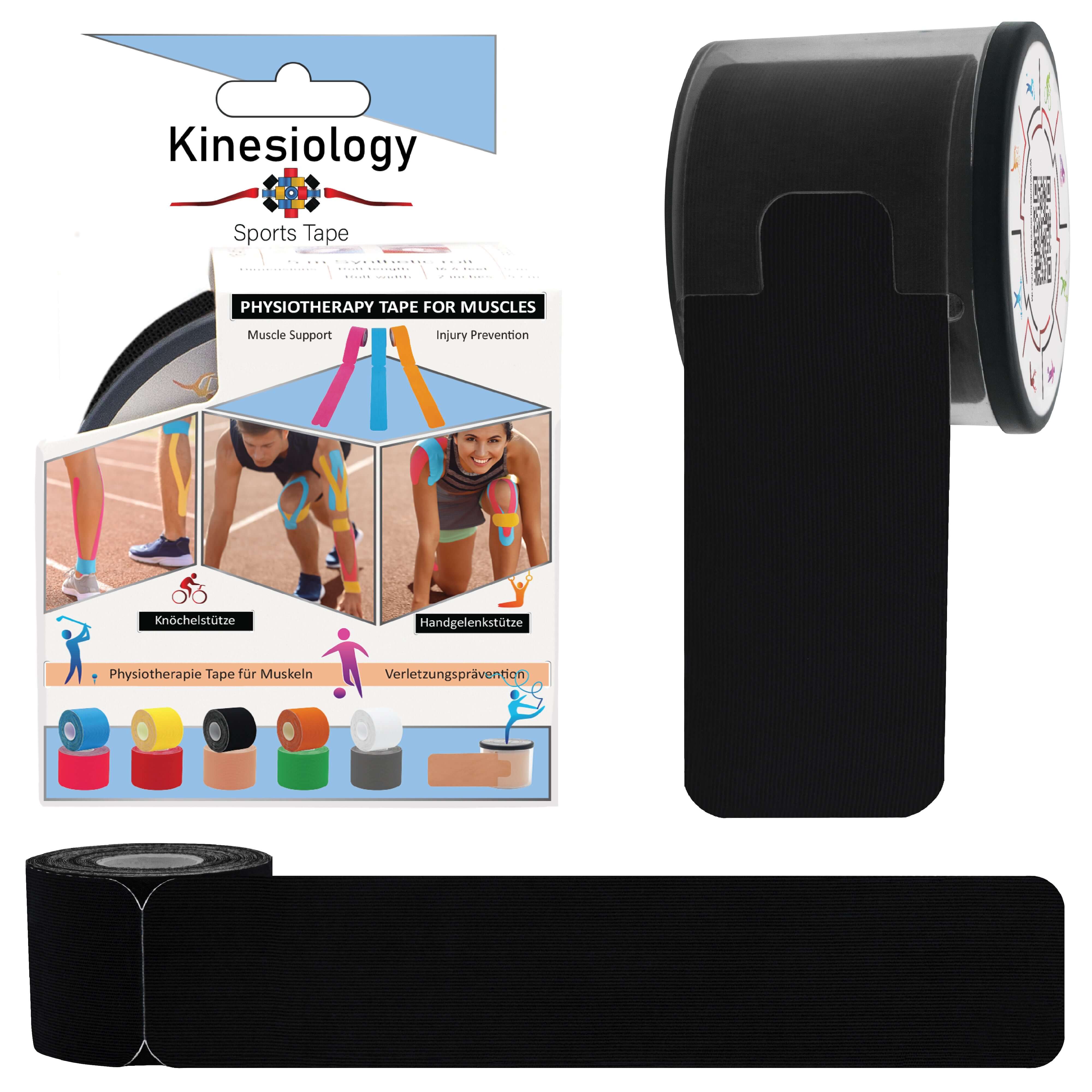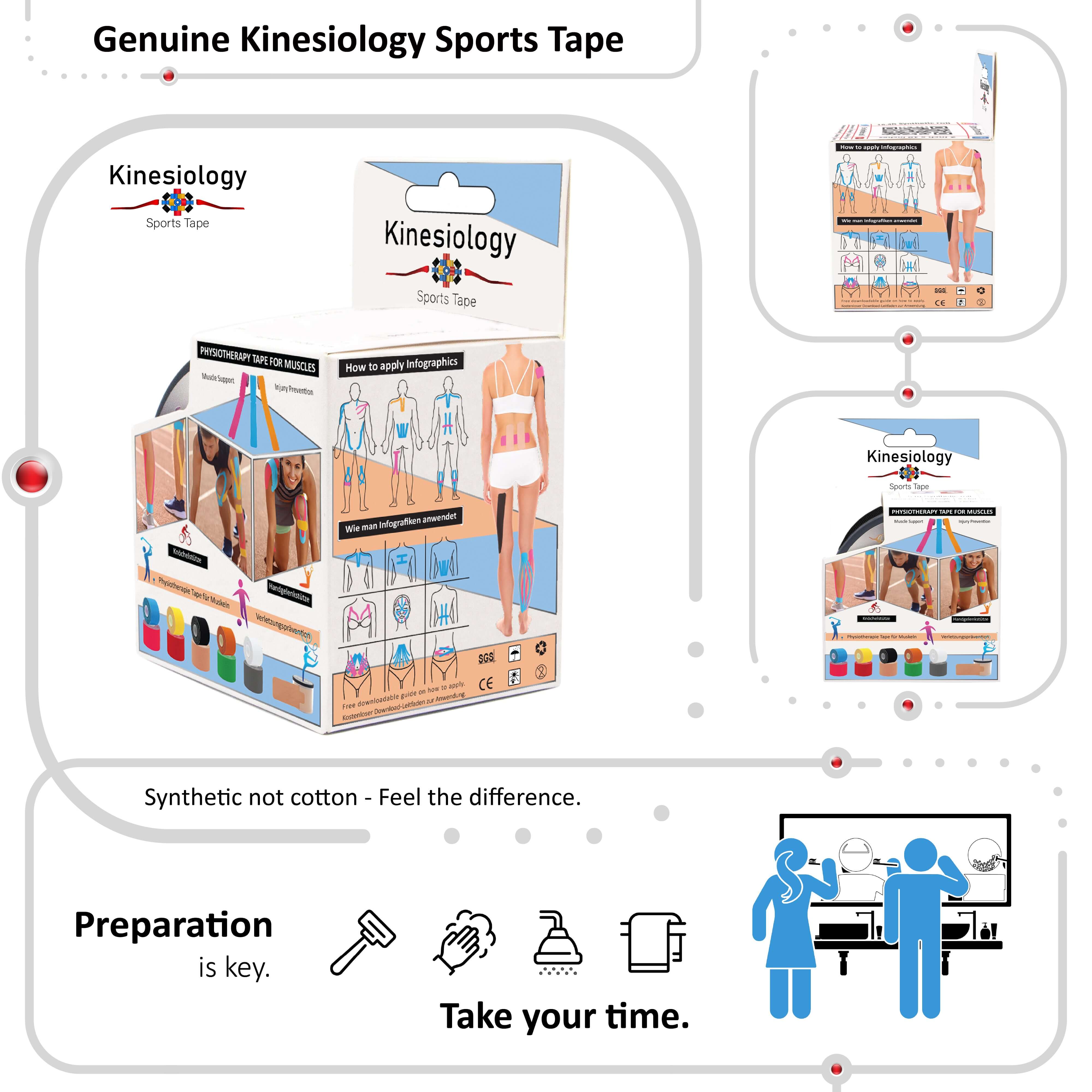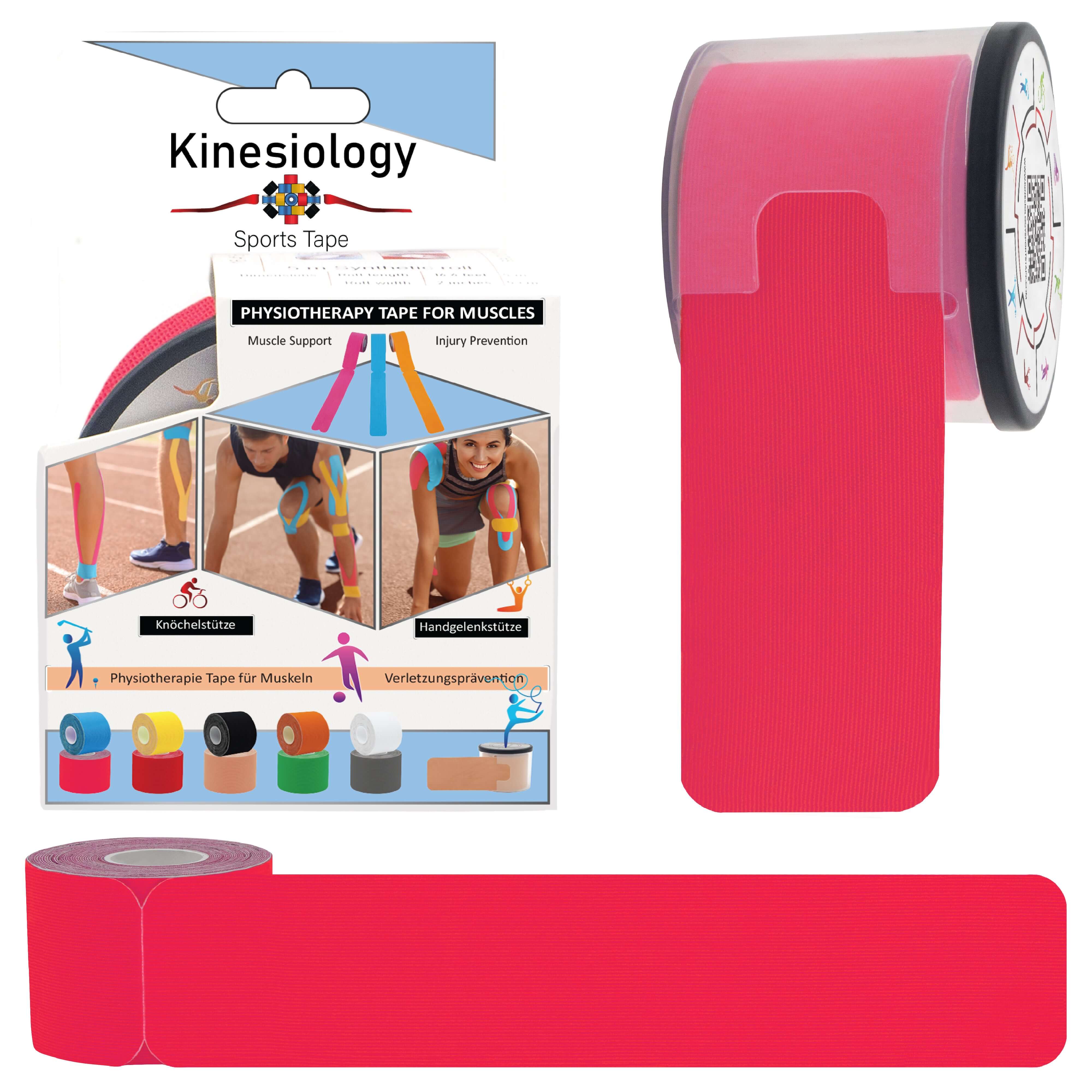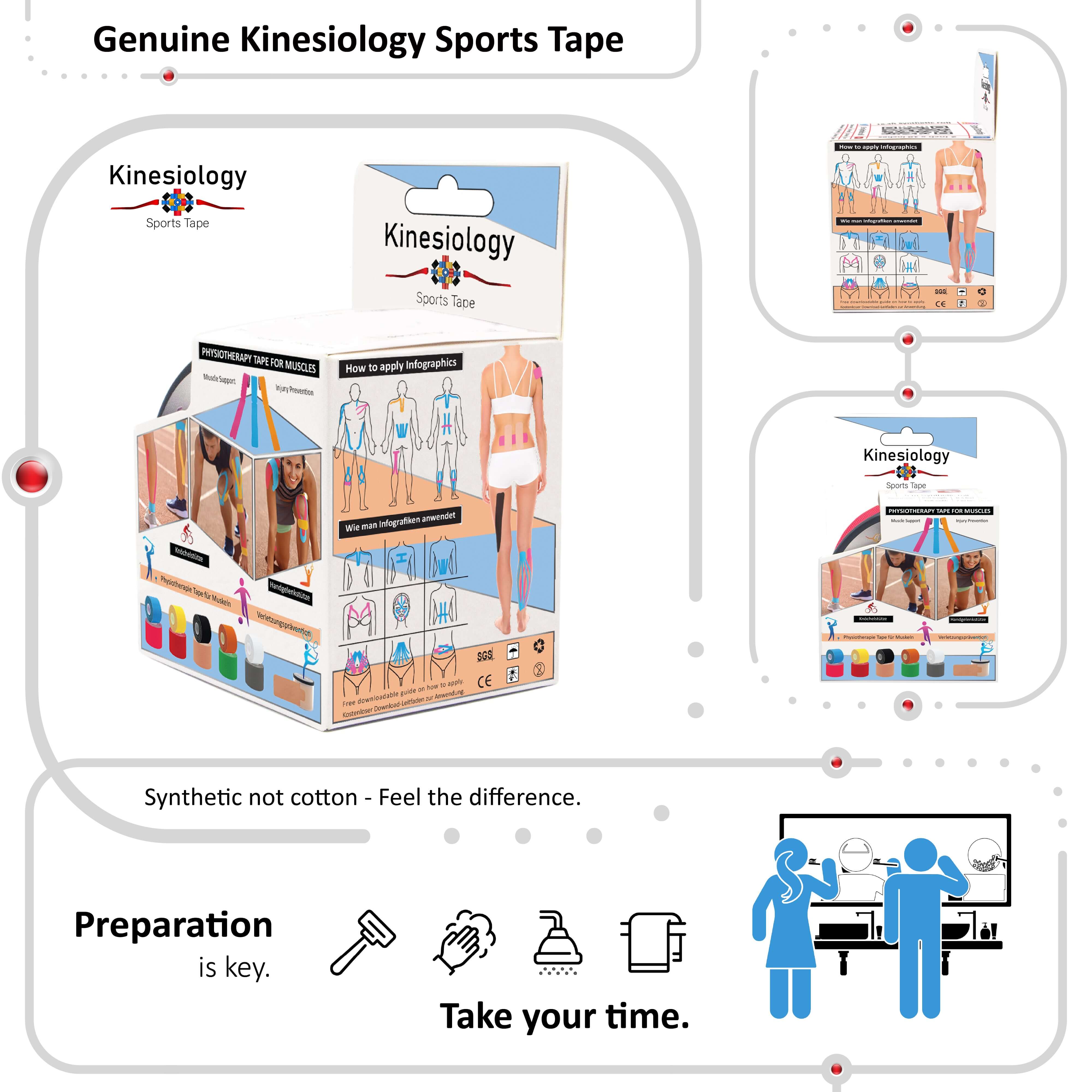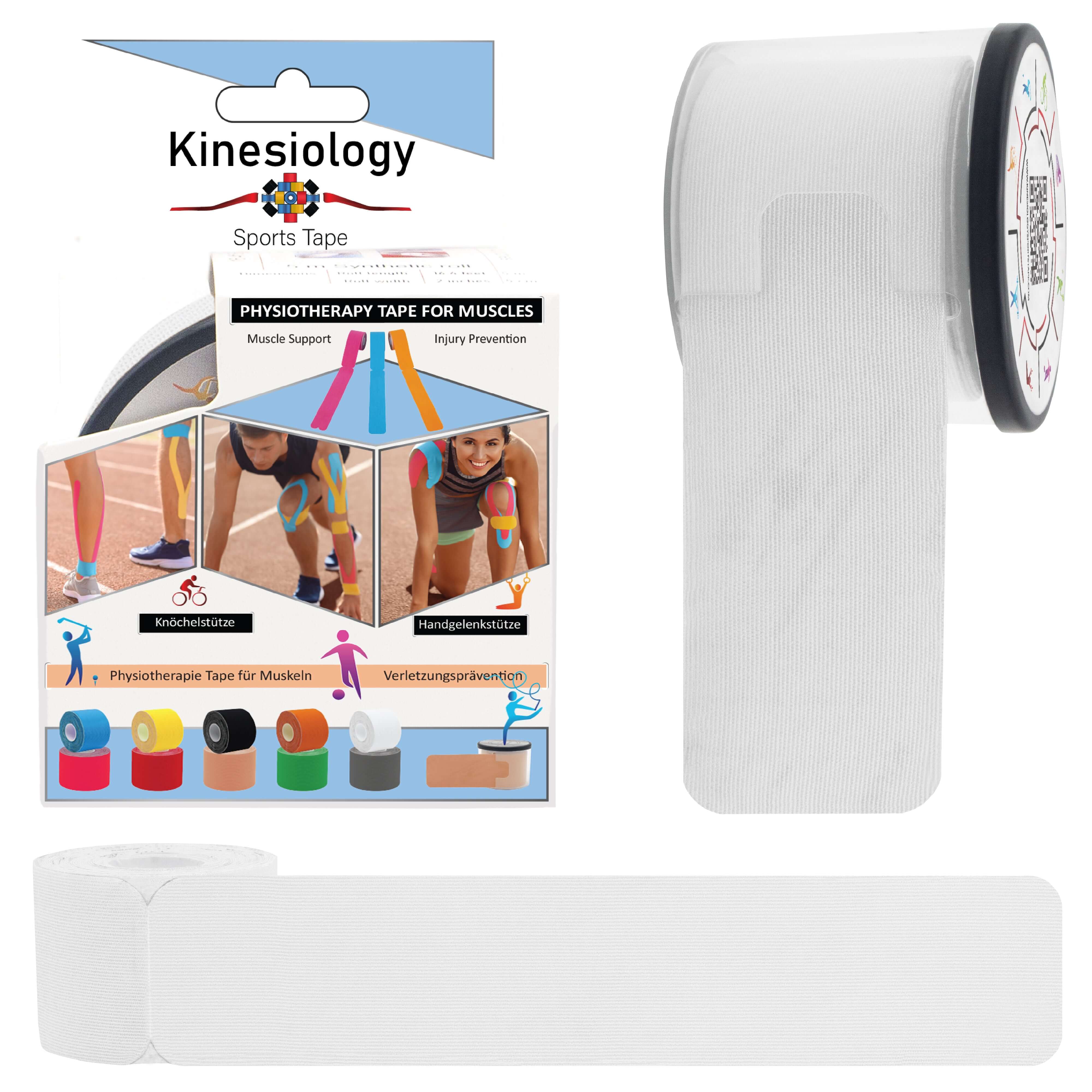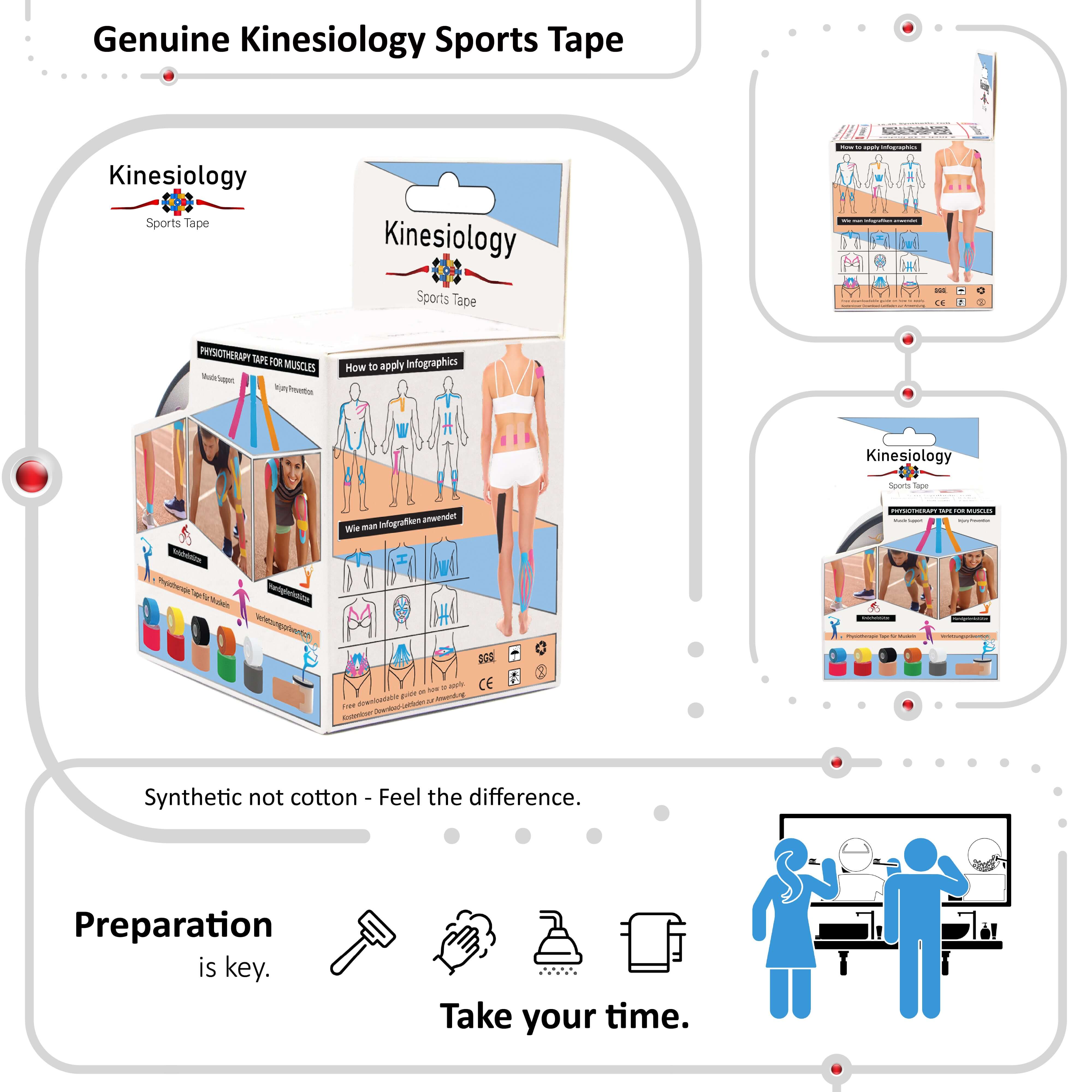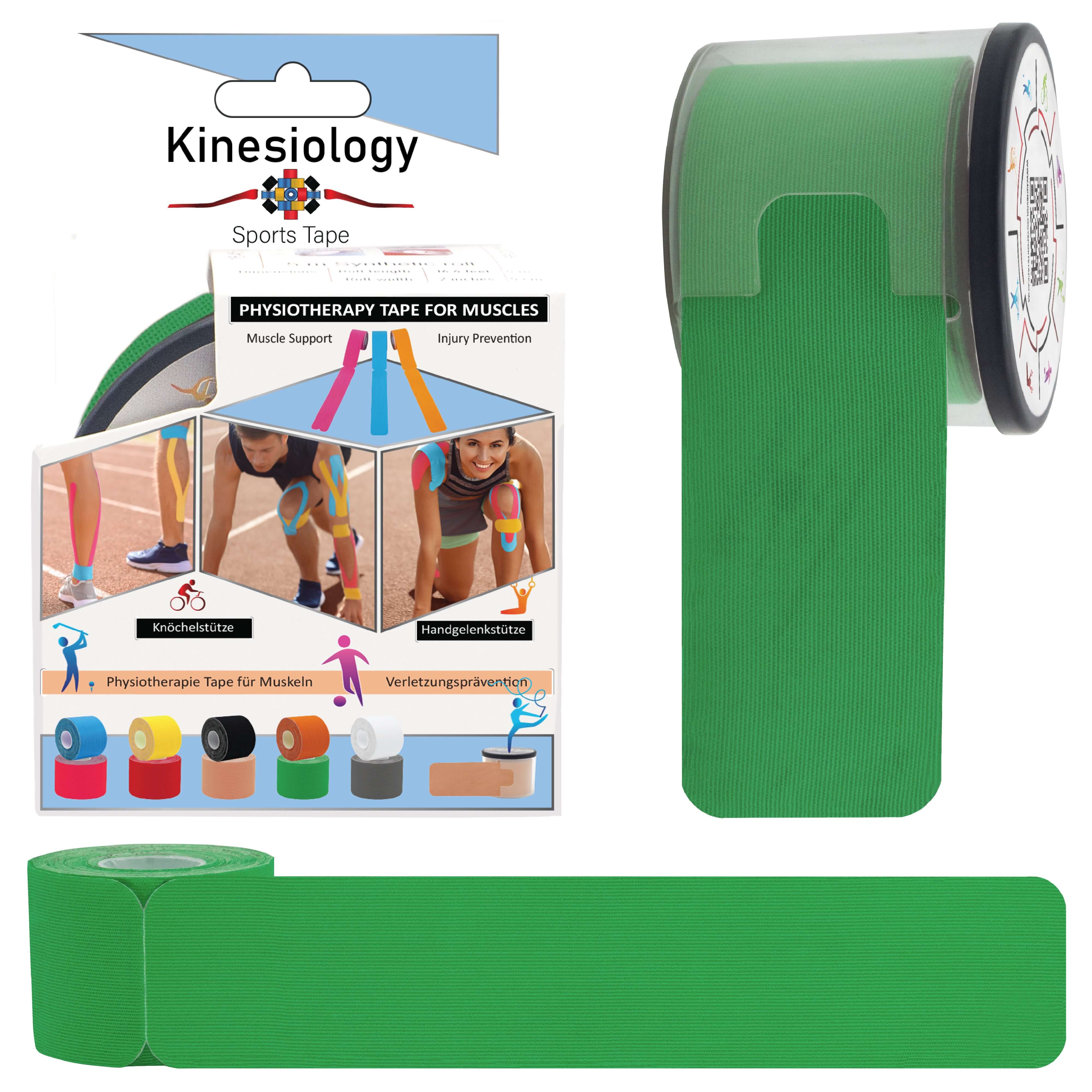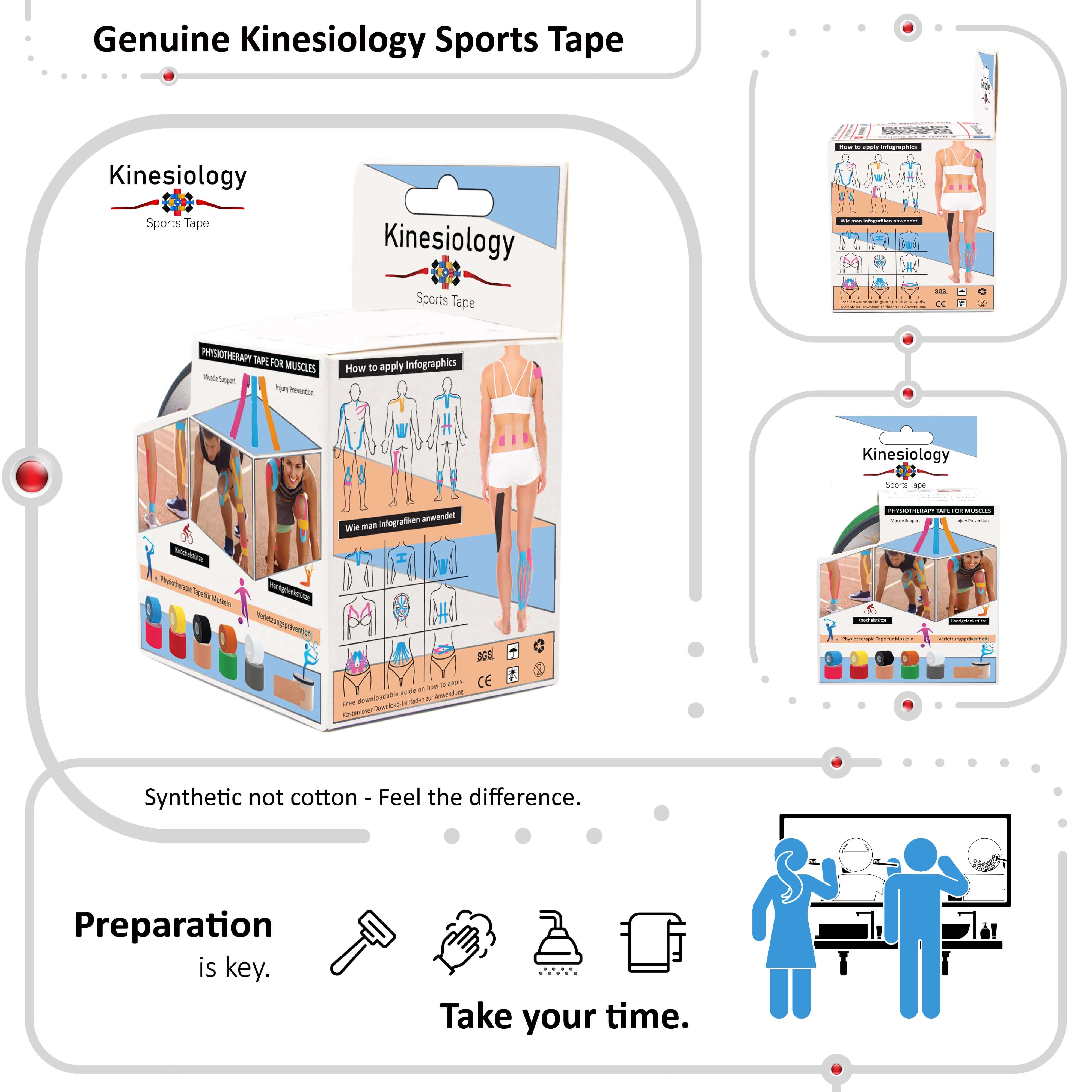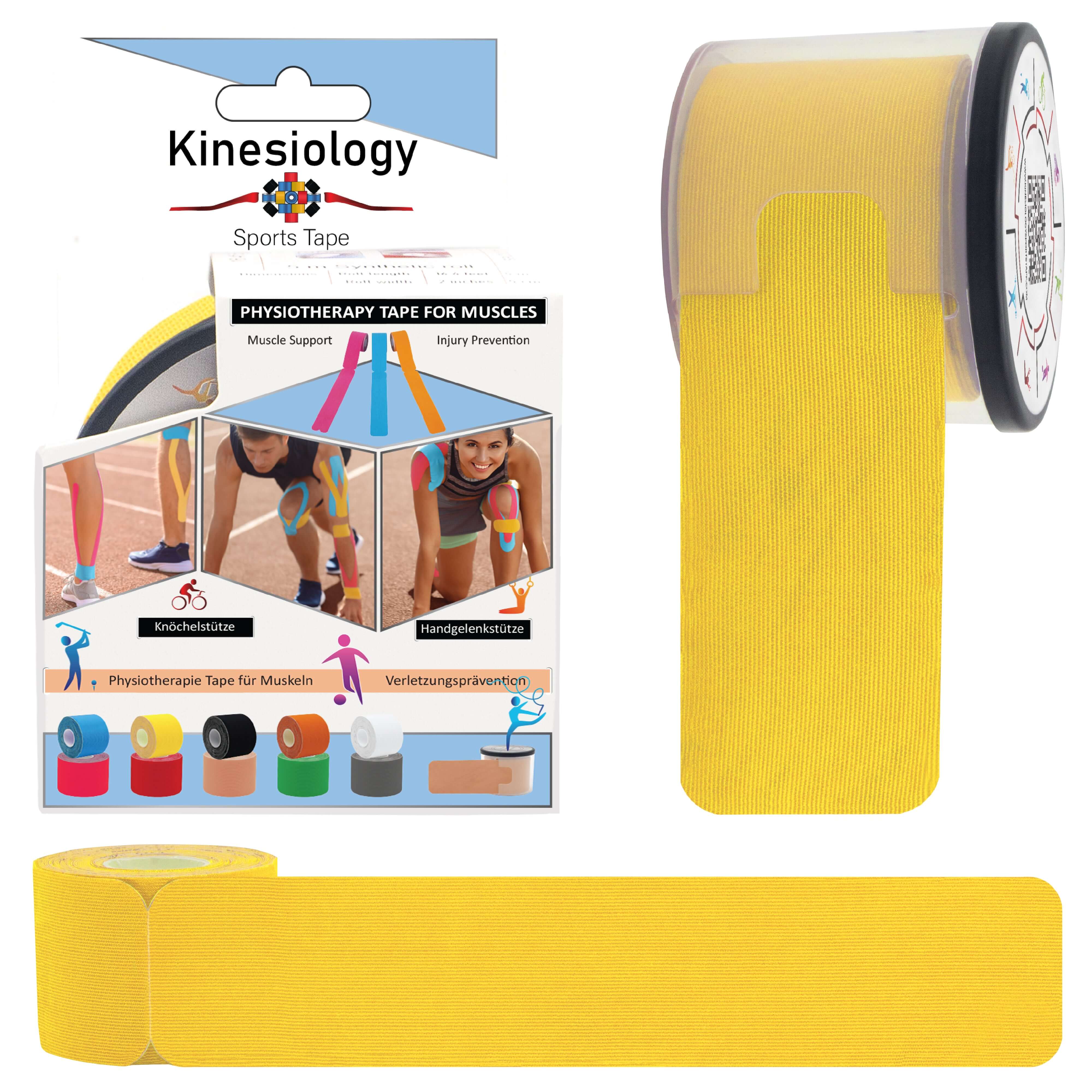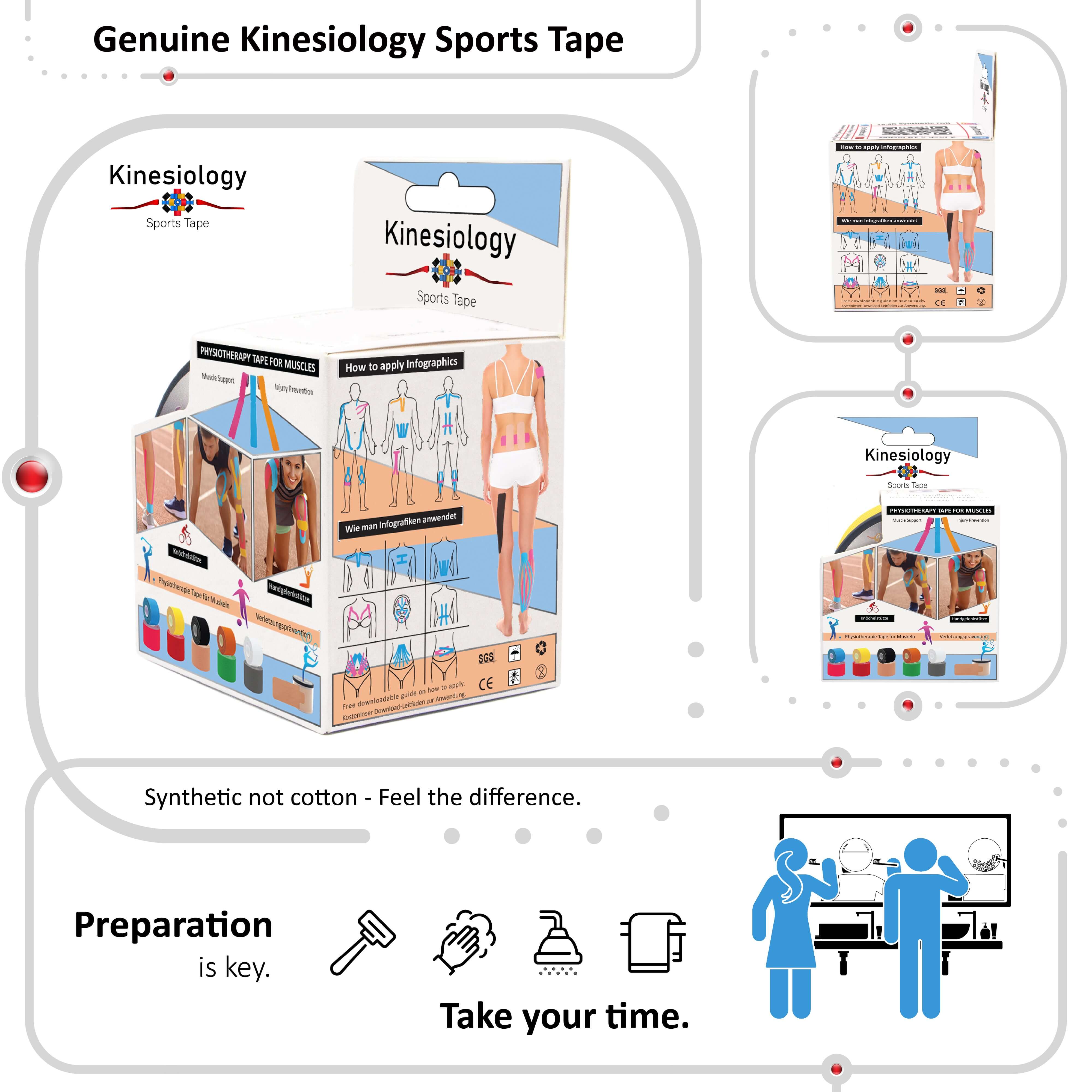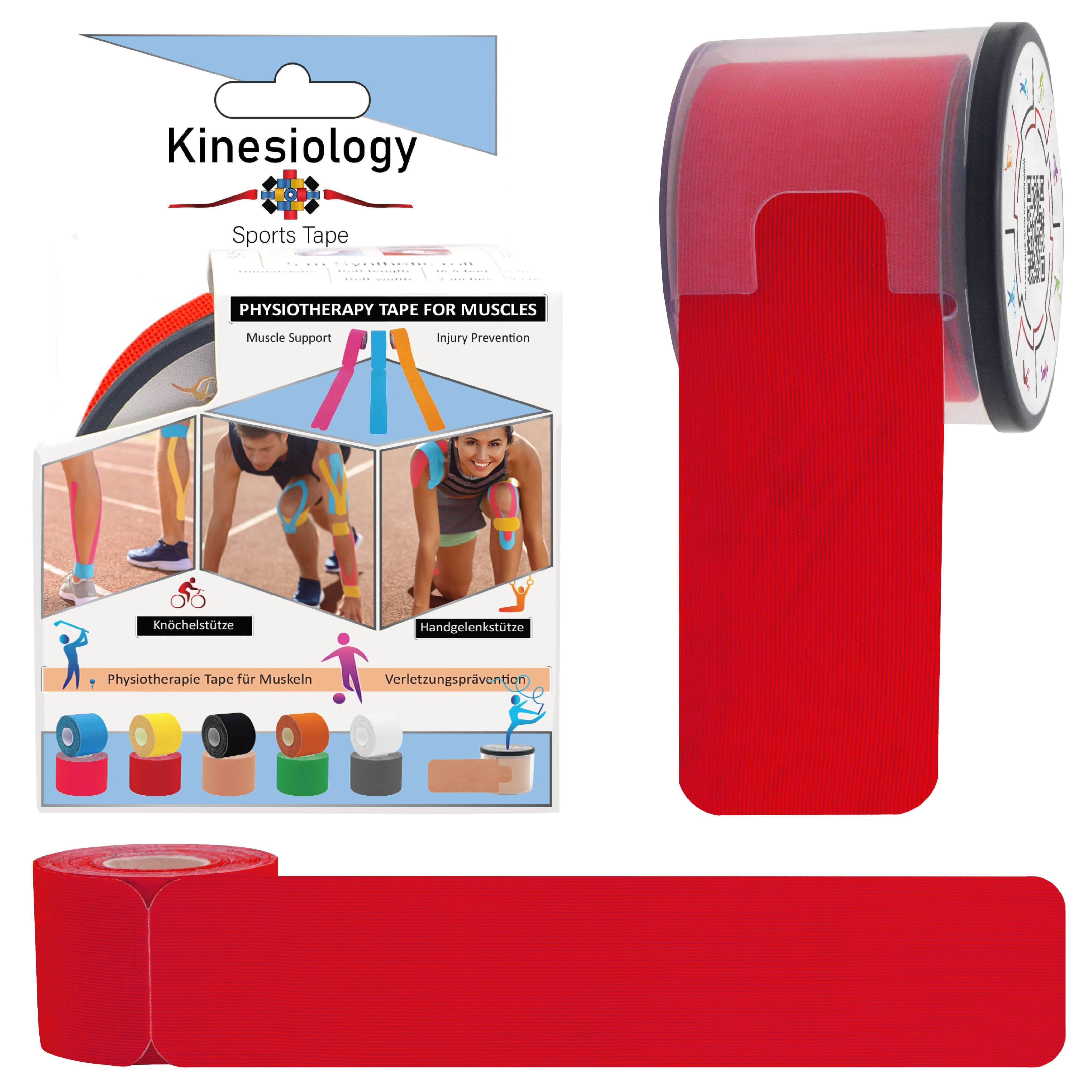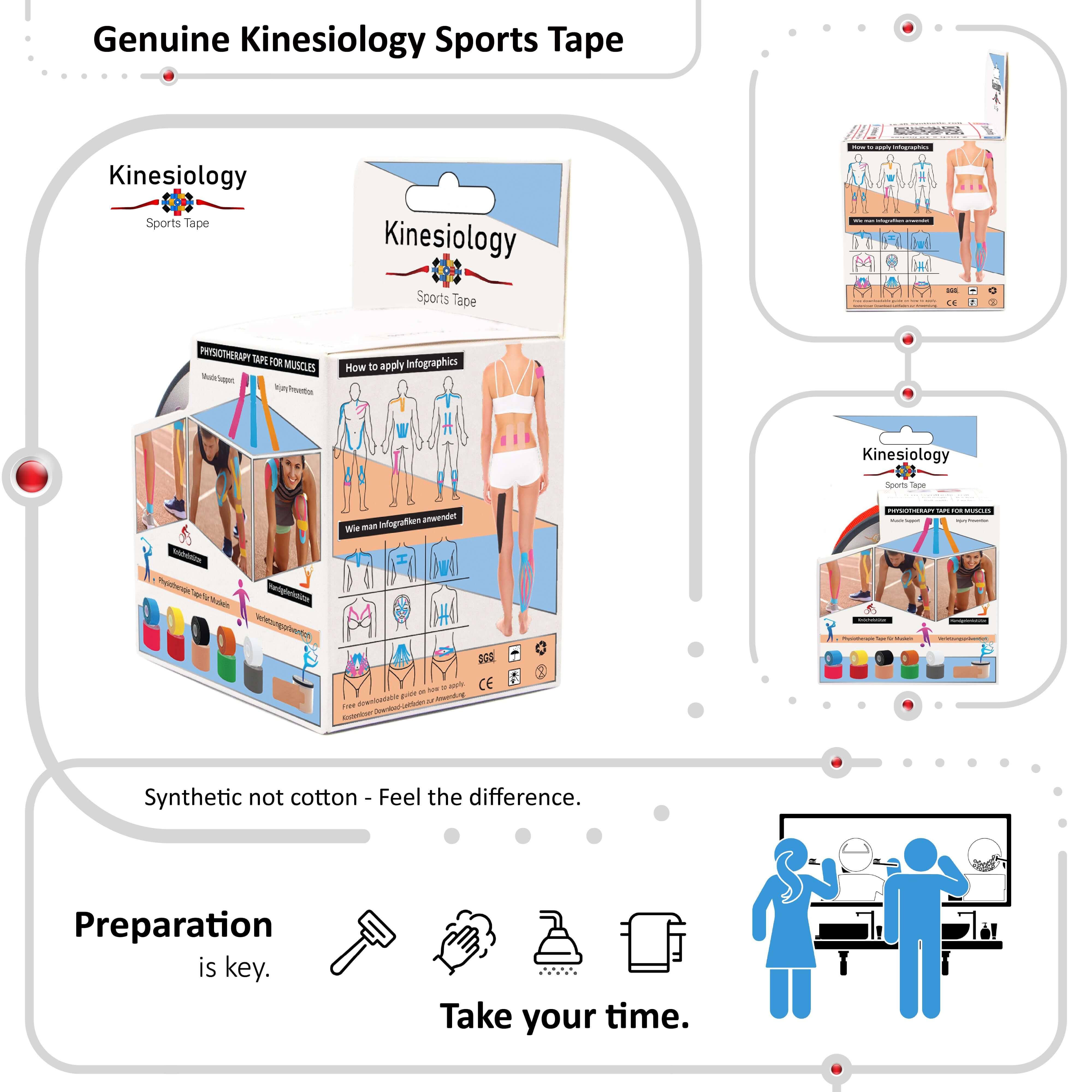
Kinesiology Tape Benefits and Uses for Athletes: Complete Performance Enhancement Guide

Athletic performance demands peak physical condition, optimal biomechanics, and rapid recovery from the intense training and competition that define modern sports. Athletes at every level, from weekend warriors to Olympic competitors, are constantly seeking safe, effective methods to enhance their performance while reducing injury risk and accelerating recovery [1]. Kinesiology tape has emerged as one of the most versatile and widely adopted tools in sports medicine, offering a unique combination of support, pain relief, and performance enhancement that has revolutionized how athletes approach injury prevention and recovery.
The distinctive colorful strips of kinesiology tape have become a familiar sight at sporting events worldwide, adorning the bodies of elite athletes across virtually every sport imaginable. From tennis courts to swimming pools, from basketball courts to marathon routes, athletes have embraced kinesiology tape not just as a treatment tool, but as an integral component of their performance optimization strategy [2]. This widespread adoption reflects the tape's proven ability to provide therapeutic benefits while allowing the unrestricted movement that athletic performance demands.
Unlike traditional athletic taping methods that focus primarily on restriction and immobilization, kinesiology tape works with the body's natural movement patterns to enhance function rather than limit it. This fundamental difference makes it particularly valuable for athletes who need to maintain peak performance while managing minor injuries, muscle fatigue, or biomechanical inefficiencies [3]. The tape's unique elastic properties and specialized application techniques can address multiple aspects of athletic performance simultaneously, from pain management and injury prevention to muscle activation and proprioceptive enhancement.
Research in sports medicine has consistently demonstrated the multifaceted benefits of kinesiology tape for athletic populations. Studies have shown improvements in muscle strength, endurance, power output, and movement quality when kinesiology tape is properly applied [4]. Additionally, the tape's ability to reduce pain and inflammation while enhancing recovery makes it an invaluable tool for athletes who must train and compete frequently with minimal rest between sessions.
This comprehensive guide explores the science-based benefits of kinesiology tape for athletes, provides detailed application strategies for various sports and conditions, and offers evidence-based protocols for maximizing performance enhancement and injury prevention. Whether you're a competitive athlete looking to gain a performance edge or a recreational athlete seeking to train more effectively and safely, understanding how to leverage kinesiology tape's benefits can be a game-changing addition to your athletic toolkit.
The Science of Athletic Performance Enhancement Through Kinesiology Tape
The mechanisms by which kinesiology tape enhances athletic performance are complex and multifaceted, involving neurological, biomechanical, and physiological processes that work synergistically to optimize human movement and function. Understanding these scientific principles is crucial for athletes and coaches who want to maximize the performance benefits of kinesiology tape applications [5].
Neuromuscular facilitation represents one of the most significant ways kinesiology tape enhances athletic performance. When applied correctly, the tape stimulates cutaneous mechanoreceptors in the skin, which send sensory information to the central nervous system about muscle length, tension, and joint position [6]. This enhanced sensory feedback improves motor unit recruitment patterns, leading to more efficient muscle activation and better coordination between muscle groups. Research has demonstrated that kinesiology tape can increase muscle activation by up to 15% in some muscle groups, translating directly to improved strength and power output.
The proprioceptive enhancement provided by kinesiology tape is particularly valuable for athletes, as proprioception is fundamental to athletic performance and injury prevention. Proprioception, often called the "sixth sense," allows athletes to know where their body parts are in space without looking, enabling rapid adjustments to maintain balance, coordination, and optimal movement patterns [7]. Studies have shown that kinesiology tape application can significantly improve proprioceptive acuity, leading to better balance, more precise movement control, and reduced risk of injury during dynamic athletic activities.
Biomechanical optimization through kinesiology tape involves correcting faulty movement patterns and enhancing efficient movement mechanics. The tape can provide subtle guidance to muscles and joints, encouraging proper alignment and movement sequencing while discouraging compensatory patterns that may lead to injury or reduced performance [8]. This is particularly important in sports that involve repetitive movements, where small biomechanical inefficiencies can accumulate over time to cause significant performance decrements or overuse injuries.
The circulatory benefits of kinesiology tape contribute to both immediate performance enhancement and accelerated recovery. The lifting effect created by the tape increases subcutaneous space, promoting better blood flow and lymphatic drainage [9]. Improved circulation enhances oxygen and nutrient delivery to working muscles while facilitating the removal of metabolic waste products like lactate and inflammatory mediators. This enhanced circulation can improve muscle endurance, reduce fatigue, and accelerate recovery between training sessions or competitive events.
Pain modulation through the gate control mechanism allows athletes to perform at higher intensities despite minor discomfort or injury. The sensory input from kinesiology tape can inhibit pain signals at the spinal cord level, reducing the perception of pain without masking important protective sensations [10]. This pain relief can enable athletes to maintain training intensity and competition performance while managing minor injuries that might otherwise limit their participation.
Psychological benefits, while often overlooked, play a significant role in athletic performance enhancement. The visible presence of kinesiology tape can provide athletes with increased confidence and a sense of support that translates to improved performance [11]. This placebo effect, while not diminishing the tape's physiological benefits, adds an additional layer of performance enhancement that can be particularly valuable in high-pressure competitive situations.
Sport-Specific Applications and Performance Benefits
Different sports place unique demands on the human body, requiring specialized kinesiology tape applications that address the specific movement patterns, injury risks, and performance requirements of each athletic discipline. Understanding these sport-specific considerations allows athletes and coaches to develop targeted taping strategies that maximize performance benefits while addressing the unique challenges of their chosen sport [12].
Running sports, including distance running, sprinting, and track events, benefit significantly from kinesiology tape applications that address the repetitive stress and biomechanical demands of these activities. Distance runners often use tape to support the plantar fascia, Achilles tendon, and calf muscles to prevent overuse injuries while maintaining the efficient movement patterns essential for endurance performance [13]. The tape can help maintain proper foot strike patterns, reduce energy expenditure through improved biomechanics, and provide support during the latter stages of long races when fatigue begins to compromise form.
Sprinters and power athletes require different taping strategies that focus on maximizing explosive power output while protecting against acute injuries. Applications that enhance quadriceps and hamstring activation can improve sprint performance, while taping patterns that support the hip and core muscles can enhance power transfer and reduce injury risk during high-intensity efforts [14]. The tape's ability to provide support without restricting range of motion is particularly valuable for sprinters who require maximum joint mobility for optimal performance.
Jumping sports, including basketball, volleyball, and track and field jumping events, place enormous stress on the lower extremities and require taping applications that enhance power production while protecting against landing injuries. Kinesiology tape can be used to support the ankle complex, enhance calf muscle activation for takeoff, and provide proprioceptive feedback that improves landing mechanics [15]. These applications are particularly valuable for athletes who must perform multiple jumps throughout a competition or training session.
Swimming presents unique challenges for kinesiology tape application due to the aquatic environment and the specific movement patterns involved in different strokes. Waterproof kinesiology tapes have been developed specifically for swimmers, allowing for applications that can enhance stroke mechanics, support shoulder stability, and improve body position in the water [16]. The tape's ability to provide sensory feedback about body position can be particularly valuable for swimmers working to optimize their technique.
Team sports like soccer, football, and rugby require versatile taping applications that can address the multidirectional movements, contact forces, and varied demands of these activities. Players often benefit from comprehensive taping strategies that provide support for multiple body regions simultaneously [17]. For example, a soccer player might use tape to support the ankles for cutting movements, enhance quadriceps activation for kicking power, and provide core stability for ball control and defensive positioning.
Racquet sports, including tennis, badminton, and squash, involve repetitive overhead movements and rapid directional changes that can benefit from specific taping applications. Tennis players commonly use kinesiology tape to support the shoulder complex, enhance forearm muscle function, and provide stability for the wrist and elbow joints [18]. The tape can help maintain proper stroke mechanics throughout long matches while reducing the risk of overuse injuries in the dominant arm.
Cycling applications focus on the unique biomechanical demands of the cycling position and the repetitive nature of pedaling. Kinesiology tape can be used to support the lower back during long rides, enhance quadriceps and glute activation for power production, and provide support for the neck and shoulders that must maintain position for extended periods [19]. The tape's breathability and moisture-wicking properties make it particularly suitable for the prolonged efforts common in cycling.
Injury Prevention Strategies Using Kinesiology Tape
Injury prevention represents one of the most valuable applications of kinesiology tape for athletes, as preventing injuries is far more effective and cost-efficient than treating them after they occur. The tape's unique properties make it an excellent tool for addressing the risk factors that commonly lead to athletic injuries [20].
Muscle imbalance correction is a fundamental aspect of injury prevention that kinesiology tape can address effectively. Many athletic injuries result from imbalances between opposing muscle groups or inadequate activation of stabilizing muscles [21]. For example, weak gluteal muscles can lead to knee injuries in runners, while poor scapular stability can contribute to shoulder injuries in overhead athletes. Kinesiology tape can be applied to facilitate weak muscles while potentially inhibiting overactive ones, helping to restore proper muscle balance and reduce injury risk.
Movement pattern optimization through kinesiology tape helps athletes maintain proper biomechanics even when fatigue begins to compromise their form. Fatigue-related changes in movement patterns are a major risk factor for injury, particularly in sports that involve repetitive movements or long-duration activities [22]. The proprioceptive feedback provided by kinesiology tape can help athletes maintain awareness of their body position and movement quality, enabling them to make corrections before faulty patterns lead to injury.
Joint stability enhancement is particularly important for athletes participating in sports that involve cutting, jumping, or contact. While kinesiology tape cannot replace the mechanical stability provided by ligaments and joint capsules, it can enhance dynamic stability through improved muscle activation and proprioceptive feedback [23]. This enhanced stability is particularly valuable for athletes returning from injury or those with a history of joint instability.
Overuse injury prevention is a major concern for athletes who train frequently or participate in sports with high repetition demands. Kinesiology tape can help distribute forces more evenly across tissues, reduce localized stress concentrations, and enhance recovery between training sessions [24]. The tape's ability to improve circulation and reduce inflammation makes it particularly valuable for preventing the gradual tissue breakdown that characterizes overuse injuries.
Early intervention strategies using kinesiology tape can help athletes manage minor issues before they develop into significant injuries. The tape can be applied at the first sign of muscle tightness, joint stiffness, or minor pain to provide support and promote healing while allowing continued participation [25]. This early intervention approach can prevent minor issues from progressing to more serious injuries that would require extended time away from sport.
Environmental adaptation support is another important aspect of injury prevention, particularly for athletes who train or compete in challenging conditions. Kinesiology tape can provide additional support during hot weather when dehydration and electrolyte imbalances may compromise muscle function, or during cold conditions when muscles may be stiffer and more prone to injury [26].
Performance Enhancement Protocols for Different Athletic Goals
Athletes have diverse performance goals that require different approaches to kinesiology tape application. Understanding how to tailor taping protocols to specific performance objectives allows athletes to maximize the benefits they receive from this versatile tool [27].
Strength and power enhancement protocols focus on maximizing muscle activation and force production. These applications typically involve taping major muscle groups with moderate to high tension to enhance neural drive and improve recruitment patterns [28]. For powerlifters and strength athletes, applications might focus on the posterior chain muscles including the glutes, hamstrings, and erector spinae to enhance deadlift and squat performance. The tape should be applied in the direction of muscle fibers with sufficient tension to provide facilitation without restricting range of motion.
Endurance performance protocols emphasize circulation enhancement, fatigue resistance, and movement efficiency. These applications often use lower tensions and focus on promoting blood flow and lymphatic drainage to delay the onset of fatigue [29]. Distance runners might benefit from applications that support the calf muscles and plantar fascia while promoting circulation in the lower extremities. The tape can help maintain efficient movement patterns throughout long-duration activities when fatigue typically leads to form breakdown.
Speed and agility enhancement requires applications that improve neuromuscular coordination and proprioceptive feedback while maintaining maximum range of motion. These protocols often focus on the core and hip muscles that are crucial for rapid directional changes and acceleration [30]. The tape should provide sensory feedback without restricting the explosive movements required for speed and agility performance.
Balance and coordination improvement protocols are particularly valuable for athletes in sports that require precise movement control. These applications focus on enhancing proprioceptive input and improving the integration of sensory information [31]. Gymnasts, figure skaters, and martial artists often benefit from applications that enhance awareness of body position and movement quality.
Recovery acceleration protocols use kinesiology tape to enhance the physiological processes that promote healing and adaptation between training sessions. These applications typically focus on improving circulation, reducing inflammation, and promoting lymphatic drainage [32]. The tape can be applied after training sessions to enhance recovery and prepare the body for subsequent training or competition.
Competition-specific protocols are designed to provide optimal support and enhancement during actual competitive events. These applications must balance performance enhancement with reliability and comfort throughout the duration of competition [33]. The tape must be applied with consideration for the specific demands of the competitive event, including duration, intensity, and environmental conditions.
Advanced Application Techniques for Elite Athletes
Elite athletes often require sophisticated taping applications that address multiple performance factors simultaneously while meeting the demanding requirements of high-level competition. These advanced techniques require extensive knowledge of anatomy, biomechanics, and sport-specific demands [34].
Multi-planar support applications recognize that athletic movements occur in three dimensions and require support that addresses forces and movements in multiple planes. These complex applications often involve multiple strips of tape applied in different directions to provide comprehensive support [35]. For example, a basketball player might receive an application that provides frontal plane stability for lateral movements, sagittal plane support for jumping and landing, and transverse plane stability for rotational movements.
Kinetic chain integration approaches recognize that athletic performance involves coordinated movement throughout the entire body. These applications address multiple segments of the kinetic chain simultaneously to optimize force transfer and movement efficiency [36]. A tennis player's serving motion, for example, involves coordination from the feet through the core to the serving arm, and taping applications can be designed to enhance this entire kinetic sequence.
Periodization-based taping involves adjusting tape applications based on the athlete's training phase and competitive schedule. During high-volume training phases, applications might focus on recovery enhancement and injury prevention, while competition phases might emphasize performance enhancement and confidence [37]. This periodized approach ensures that taping interventions align with the athlete's overall training and competition goals.
Biomechanical correction protocols use sophisticated movement analysis to identify specific movement deficiencies and design targeted taping interventions. These applications require detailed understanding of optimal movement patterns and the ability to design tape applications that encourage proper mechanics while discouraging faulty patterns [38]. High-speed video analysis and force plate data can inform these advanced applications.
Neuromuscular re-education applications are designed to help athletes learn new movement patterns or correct existing dysfunctions. The tape provides continuous sensory feedback that helps reinforce proper movement patterns and discourage compensatory movements [39]. These applications are particularly valuable for athletes returning from injury or those working to improve technique.
Integration with Training and Competition Schedules
Successful use of kinesiology tape for athletic performance requires careful integration with training periodization and competition schedules. The timing of tape application, duration of wear, and coordination with other interventions all influence the effectiveness of taping protocols [40].
Pre-training applications can be used to enhance muscle activation, improve movement quality, and provide injury prevention support during training sessions. These applications should be designed to support the specific demands of the planned training while providing feedback that enhances learning and adaptation [41]. The tape can help athletes maintain proper form throughout training sessions, particularly when fatigue begins to compromise movement quality.
Post-training applications focus on recovery enhancement and preparation for subsequent training sessions. These applications typically emphasize circulation improvement, inflammation reduction, and muscle relaxation [42]. The tape can be applied immediately after training to begin the recovery process and can often be worn overnight to maximize recovery benefits.
Competition preparation protocols involve strategic tape application in the days and hours leading up to competition. These applications must be thoroughly tested during training to ensure they provide the desired benefits without causing discomfort or restriction [43]. The psychological benefits of familiar taping routines can be particularly valuable during high-pressure competitive situations.
Travel considerations are important for athletes who compete frequently in different locations. Kinesiology tape applications can help athletes manage the physical stresses of travel while maintaining their preparation routines [44]. The tape's portability and ease of application make it an ideal tool for maintaining support and recovery protocols while traveling.
Multi-day competition strategies require careful planning to ensure tape effectiveness throughout extended competitive periods. Applications must be designed to maintain their benefits for the duration of competition while allowing for necessary adjustments or reapplications [45]. The tape's durability and water resistance make it suitable for multi-day events, but backup plans should be in place for emergency reapplications.
Monitoring and Optimizing Athletic Performance Outcomes
Effective use of kinesiology tape for athletic performance requires systematic monitoring of outcomes and continuous optimization of application protocols. This data-driven approach ensures that taping interventions provide maximum benefit while identifying areas for improvement [46].
Performance metrics should be established before beginning any taping protocol to provide objective measures of effectiveness. These might include strength measurements, speed times, endurance markers, or sport-specific performance indicators [47]. Regular assessment of these metrics helps determine whether taping interventions are achieving their intended goals and guides adjustments to application protocols.
Subjective feedback from athletes provides valuable insights into the perceived benefits and limitations of different taping applications. Athletes should be encouraged to provide detailed feedback about comfort, confidence, perceived support, and any changes in performance or recovery [48]. This subjective information often reveals benefits that may not be captured by objective measurements.
Movement quality assessment can help determine whether kinesiology tape is achieving its intended biomechanical effects. Video analysis, movement screens, or formal biomechanical testing can provide insights into changes in movement patterns and efficiency [49]. These assessments are particularly valuable for applications designed to correct movement dysfunctions or enhance technique.
Recovery monitoring helps determine whether kinesiology tape is enhancing the physiological processes that promote adaptation and healing. Markers of recovery might include heart rate variability, sleep quality, perceived exertion, or biochemical markers of inflammation and muscle damage [50]. Improved recovery can lead to enhanced training adaptations and better competitive performance.
Injury tracking provides important information about the effectiveness of injury prevention protocols. Athletes using kinesiology tape should track any injuries or physical issues that occur, allowing for analysis of injury patterns and identification of areas where taping protocols might need adjustment [51].
Long-term adaptation monitoring recognizes that the body's response to kinesiology tape may change over time as athletes adapt to its effects. Regular reassessment of taping protocols ensures that applications continue to provide benefits and allows for modifications based on changing needs or goals [52].
Conclusion: Maximizing Athletic Potential Through Strategic Kinesiology Tape Use
Kinesiology tape represents a powerful tool for athletic performance enhancement that can provide significant benefits when used strategically and systematically. Its unique ability to enhance performance while supporting injury prevention makes it an invaluable addition to any athlete's toolkit [53]. However, realizing these benefits requires understanding the scientific principles underlying the tape's effects, developing sport-specific application skills, and integrating taping protocols effectively with training and competition schedules.
The versatility of kinesiology tape allows it to address multiple aspects of athletic performance simultaneously, from immediate performance enhancement to long-term injury prevention and recovery acceleration. This multifaceted approach makes it particularly valuable for athletes who must balance the competing demands of training, competition, and recovery [54]. As research continues to expand our understanding of the tape's mechanisms and optimal application techniques, its role in athletic performance is likely to continue evolving.
Success with kinesiology tape requires a commitment to learning proper application techniques, monitoring outcomes systematically, and continuously optimizing protocols based on individual responses and changing needs. Athletes who approach kinesiology tape use with this level of dedication and attention to detail are most likely to experience significant benefits [55]. The investment in learning these skills pays dividends through improved performance, reduced injury risk, and enhanced training capacity.
For athletes considering incorporating kinesiology tape into their performance enhancement strategy, it's important to start with clear goals, seek proper instruction in application techniques, and maintain realistic expectations about outcomes. While kinesiology tape can provide significant benefits, it works best as part of a comprehensive approach to athletic performance that includes proper training, nutrition, recovery, and injury prevention strategies [56]. When used appropriately and integrated effectively with other performance enhancement tools, kinesiology tape can help athletes reach new levels of performance while maintaining the health and longevity necessary for sustained athletic success.
References
[1] https://www.hss.edu/health-library/move-better/kinesiology-tape [2] https://pmc.ncbi.nlm.nih.gov/articles/PMC8169012/ [3] https://www.verywellhealth.com/kinesiology-tape-in-physical-therapy-2696435 [4] https://www.performancehealth.com/articles/kinesiology-tape-101-everything-you-need-to-know [5] https://oaidocs.com/2018/09/14/benefits-of-kinesiology-tape/ [6] https://www.healthline.com/health/kinesiology-tape [7] https://therapypartnersgroup.com/7-conditions-that-kinesio-tape-can-benefit-from/ [8] https://tapegeeks.com/blogs/news/benefits-of-kinesiology-tape [9] https://www.premierhealth.com/your-health/articles/women-wisdom-wellness-/how-tape-heals-the-secret-behind-kinesiology-tape [10] https://coastalorthopedics.com/blog/benefits-of-kinesio-tape/ [11] https://pmc.ncbi.nlm.nih.gov/articles/PMC7349891/ [12] https://www.kttape.com/pages/how-to-apply-kt-tape [13] https://www.performancehealthacademy.com/plantar-fasciitis-kinesiology-taping-technique-tapetuesday.html [14] https://www.kttape.com/blogs/how-to-apply/full-knee-support [15] https://www.kttape.com/blogs/how-to-apply/ankle-stability [16] https://www.thysol.us/how-to-tape/ankle-stability/ [17] https://www.nike.com/a/how-to-tape-an-ankle [18] https://www.kttape.com/blogs/how-to-apply/general-shoulder [19] https://www.thysol.us/how-to-tape/shoulder-pain-instability/ [20] https://sporttape.co.uk/pages/kinesiology-taping-shoulder [21] https://www.verywellhealth.com/support-your-shoulder-with-kinesiology-tape-2696040 [22] https://kinesiologysportstape.com/en-us/pages/shoulder-pain [23] https://www.kttape.com/blogs/how-to-apply/middle-back [24] https://pmc.ncbi.nlm.nih.gov/articles/PMC6657767/ [25] https://kinesiotape.com/kinesio-pre-cut-back/ [26] https://thejupiterchiropractor.com/blog/how-to-kinesio-tape-for-lower-back-pain [27] https://www.performancehealthacademy.com/star-pattern-kinesiology-taping-technique-for-lumbar-pain.html [28] https://www.healthcentral.com/condition/back-pain/can-you-kt-tape-your-back-pain-away [29] https://www.kttape.com/pages/back [30] https://pubmed.ncbi.nlm.nih.gov/27634093/ [31] https://www.ptlinktherapy.com/kinesio-taping-vs-athletic-taping [32] https://www.physixgear.com/blogs/sport-and-wellness/kinesiology-tape-vs-athletic-tape-which-one-is-right-for-me [33] https://www.hinklerpodiatry.com.au/k-tape-vs-sports-tape/ [34] https://goodhealthphysicaltherapy.com/what-is-the-difference-between-kinesiotape-and-athletic-tape/ [35] https://setptusa.com/blog/physical-therapy/kt-tape-kinesio-tape/ [36] https://www.thysol.com.au/sportstape/ [37] https://www.orthopedicsri.com/blog-items/kinesiology-tape-fake-fad-functional/ [38] https://www.ladybirdpt.com/post/taping-a-pregnant-belly [39] https://adatewithbaby.com/how-to-kinesio-tape-pregnant-belly/ [40] https://pmc.ncbi.nlm.nih.gov/articles/PMC5751726/ [41] https://pmc.ncbi.nlm.nih.gov/articles/PMC4837927/ [42] https://kinesiologysportstape.com/en-us/pages/pregnancy-taping [43] https://www.thysol.us/how-to-tape/lymphatic-taping-lymphedema/ [44] https://kinesiotaping.com/kinesio-taping-of-superficial-lower-extremity-lymphatic-pathways/ [45] https://pmc.ncbi.nlm.nih.gov/articles/PMC9224659/ [46] https://pmc.ncbi.nlm.nih.gov/articles/PMC4520333/ [47] https://www.kttape.com/products/course-3-applied-kinesiology-taping-for-lymphatic-assist [48] https://www.performancehealthacademy.com/how-to-use-kinesiology-tape-to-reduce-swelling.html [49] https://pubmed.ncbi.nlm.nih.gov/38243921/ [50] https://www.mdpi.com/2075-1729/14/2/249 [51] https://heelthatpain.com/treatments/kinesiology-tape/ [52] https://www.verywellhealth.com/treat-your-plantar-fasciitis-with-kinesiology-tape-2696033 [53] https://bracelab.com/clinicians-classroom/which-tape-is-best-for-treating-plantar-fasciitis [54] https://www.healthandcare.co.uk/blog/ultimate-guide-how-to-apply-kinesiology-tape.html [55] https://www.physio-pedia.com/Knee_Taping [56]

